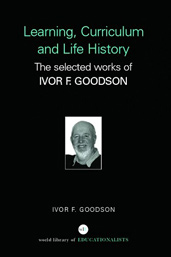Learning, Curriculum and Life Politics: the selected works of Ivor F. Goodson
Long Waves of Educational Reform
At Eastside, the school’s student newspaper, The Word, reflected the radical side of the youth movement. The issue for May 1969, for instance, opened with a satiric front page featuring a look at the school’s latest ‘torture machines’ under the slogan, “If you can’t beat a student, kill him.” Inside, an editorial called on the student body to protest loudly and frequently against any perceived injustice, stating that a recent protest “showed the Department of Education that the Universities were not the only ones capable of raising a bit of trouble if pushed too far.” The issue also included a full-page futuristic comic strip titled, “The Revolution passed this way.” In that episode, the hero – a city revolutionary named Alex – kills an evil ‘brain policeman’ and heads for the life of a fugitive in the city’s slums (The Word, 1969).
This new attitude also generated less dramatic, but more effective, agendas within the school walls. Students took an active role in determining the microstructures of their schooling experience. They sought to modify curriculum and pedagogy in the classroom. As one teacher put it, “they were testing, testing, testing all the time” (Interview January 1995).
Like Eastside School, Lord Byron School was a center of innovation in the spirit of the Hall-Dennis report from its foundation in 1970. For the first five years, until 1975, this was a period of ‘creativity and experimentation’ Again, the school was largely staffed by a young and experimental new cohort of teachers. As a former teacher recalled: “we were largely very young and single – not everybody. Many were beginning their careers and not only brought youth and idealism, but also a particular philosophy because they had come through the universities of the 1960s. The times were significant for the things we did.”
As a confirmation of the conjuncture of change in this period, the assertion that ‘the times were significant for the things we did’ provides evidence for the belief in the distinctiveness of this period. In some senses, the wider cultural and social ethos of these times pervaded the school as they did at Eastside. “The flower children of the 1960s – that was the perception. They had this beautiful school that the Board had pumped all kinds of money into, selected the very best of the best to go there, and they were free floaters, free thinkers. They were literally likened to the flower children and some of that never went away.”
With a youthful and idealistic staff, the first principal, Ward Bond, was able to experiment with the organization of the school following the Hall-Dennis objectives and the flexibility this report facilitated. Ward Bond took full advantage of this flexibility to create an organization that was intended to alter conventional use of time and space to achieve his vision of a school that was sufficiently flexible to meet diverse student needs.
